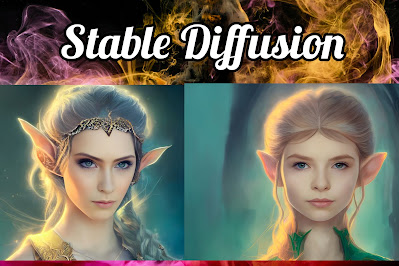Metaverse Overview
 |
| What is Metaverse |
Technology Used In Metaverse
Some of the technology used in the metaverse includes:
Virtual Reality (VR) headsets:
These are devices that allow users to experience and interact with a computer-generated environment as if they were physically present in it.
Augmented Reality (AR) devices:
These devices overlay digital information and images onto the physical world, creating a hybrid reality that combines the real and the virtual.
3D graphics and modeling software:
These are used to create and render the virtual environments and objects that make up the metaverse.
Multiplayer game engines:
These are used to create and host online games and virtual worlds that can be accessed by multiple users simultaneously.
Networking and communication technologies:
These allow users to connect and interact with each other in the virtual world.
Virtual currency and payment systems:
These allow users to buy and sell virtual goods and services within the metaverse.
Artificial intelligence and machine learning:
These technologies can be used to create virtual assistants and other intelligent agents that can interact with users in the metaverse.
To get into the metaverse, you will need to have a device that is capable of accessing virtual reality or augmented reality content, such as a VR headset or AR glasses. You will also need to have an internet connection and possibly an account with a platform that provides access to the metaverse.
There are many platforms and applications that offer access to the metaverse, such as video games, social media networks, and virtual worlds. Some examples include Second Life, VR Chat, and Minecraft.
To get started, you can research the various platforms and applications available and choose one that meets your needs and interests. You can then follow the instructions provided by the platform or application to set up your device and create an account. Once you have done this, you will be able to enter the metaverse and start exploring.
How to make money online with Quora Read Here
Which Platforms Used To Create Metaverse?
There are many platforms that can be used to access the metaverse, including video games, social media networks, and virtual worlds. Some examples include:
- Second Life: a virtual world where users can create, connect, and chat with others from around the world using avatars.
- VR Chat: a social VR platform that allows users to create and join virtual reality chat rooms.
- Minecraft: a sandbox video game that allows players to build and explore virtual worlds made up of blocks.
- Roblox: a platform that allows users to create and play games in virtual worlds.
- AltspaceVR: a virtual reality platform that allows users to meet and interact with others in virtual spaces.
- Sansar: a virtual reality platform that allows users to create, share, and explore immersive experiences.
- Decentraland: a decentralized virtual reality platform that allows users to create, experience, and monetize content and applications.
- High Fidelity: a virtual reality platform that allows users to create, share, and experience virtual reality content.
- VR World: a virtual reality platform that offers a variety of immersive experiences, including games, social environments, and educational content.
There are many other platforms and applications available as well, and new ones are constantly being developed.
How to create Metaverse land?
To create land in a metaverse, you will need to use a platform or tool that allows you to build and design virtual spaces. Some popular platforms for creating metaverse land include Second Life, Minecraft, and Roblox.
Here are some steps you can follow to create your own land in a metaverse:
- Choose a platform or tool that allows you to build and design virtual spaces.
- Sign Up an account on the platform and log in.
- Follow the platform's tutorial or documentation to learn how to create and design your virtual space.
- Use the platform's tools and features to create and customize your land, including adding terrain, buildings, and other objects.
- Publish your land and make it available for others to visit and explore.
Earn Money With Metaverse
There are several ways that you can earn money within the metaverse. Here are a few ideas:
Create and sell virtual real estate:
Many people are interested in owning property within the metaverse, so you could create and sell virtual land or buildings.
Create and sell virtual goods:
You can create and sell virtual items such as clothing, accessories, or even virtual pets within the metaverse.
Offer services:
You could offer services within the metaverse such as avatar customization, event planning, or even education.
Participate in paid virtual events:
Some virtual events may pay attendees for participating, such as virtual concerts or conferences.
Work as a freelancer:
You could offer your skills and services as a freelancer within the metaverse, such as graphic design, writing, or programming.
Monetize your content:
If you create content within the metaverse, such as videos or stream games, you can monetize it by using platforms that allow you to earn money through ads, sponsorships, or subscription fees.
Invest in virtual assets:
You could also consider investing in virtual assets, such as virtual currency or virtual real estate, with the hope of earning a return on your investment.
It's important to keep in mind that earning money within the metaverse will likely require time, effort, and some level of skill or expertise.


















Social Media Icons